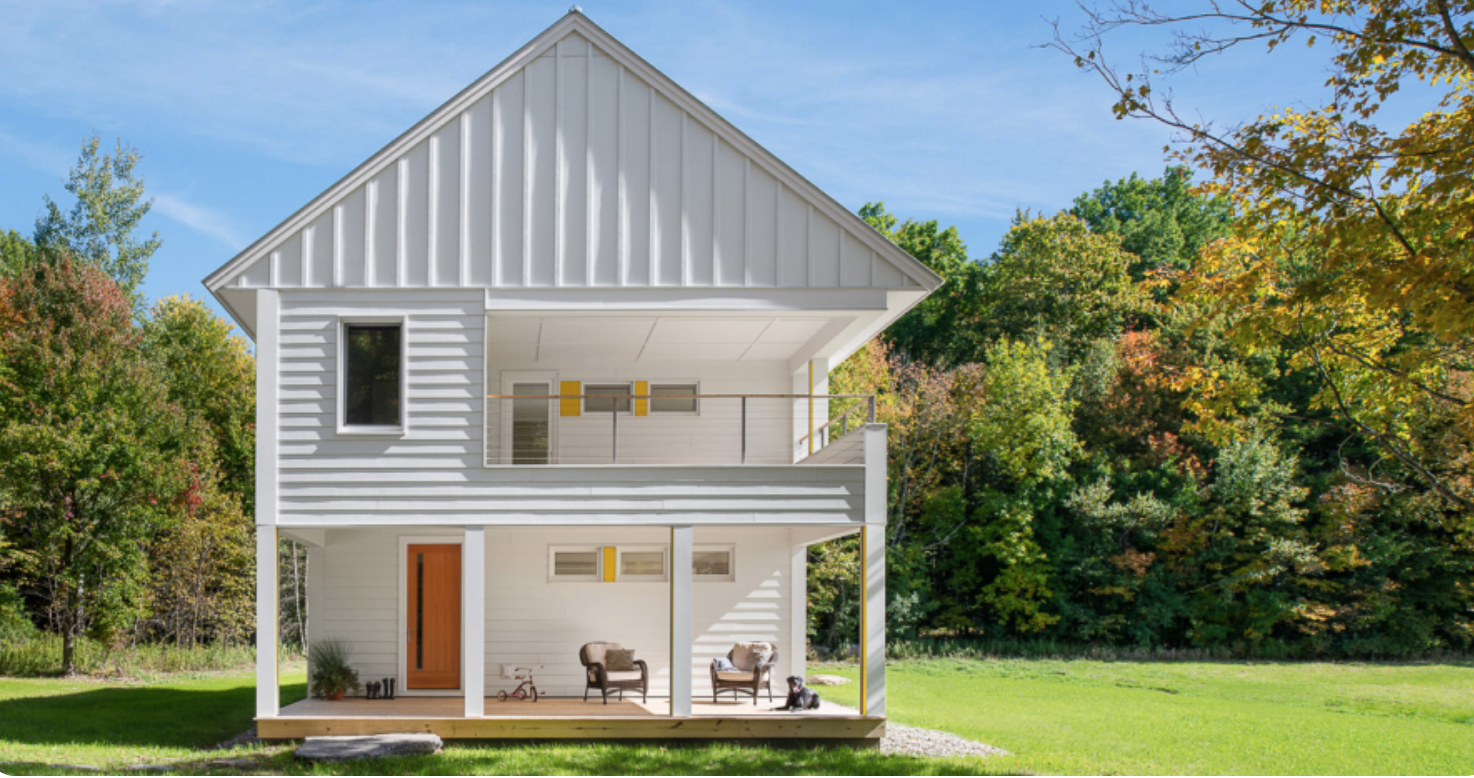
The Lewis Creek Cottage is located in Northern Vermont. This eco-building is situated on the northern edge of an existing hay meadow with a scenic view south to the Green Mountains. This eco building adjoins 65 acres of preserved land that is part of the local efforts to improve the Lewis Creek Watershed. The net-zero eco building features a 15 kW solar array, with a battery backup that provides auxiliary power when required.
The primary living and gathering spaces are oriented toward the southern view and the sun. The smaller service spaces are configured along the north side of the eco-building, facing a wooded area. While the eco-building echoes the domestic forms of rural Vermont, upon close inspection you can see the dynamic and contemporary expression. The open floor plan in this eco home design enables the various living configurations that can be adapted as a young family grows.
Eco-buildings have come a long way in the last few decades, and building a green home design is quickly shifting from an alternative way of home design to the mainstream. According to a study in 2017, about one-third of home builders report that they are currently doing green buildings for more than a majority of their building projects. And the green building market share is expected to grow significantly, with the number of dedicated green home design builders focusing on building green home designs expected to grow. Plus, in addition to new green buildings there continues to be enormous growth in the number of people doing remodeling using green building methods too.
That is good news for home builders who are looking to distinguish and grow their business in this expanding market. It’s also good news for the people who are interested in building the home design of their dreams as a net zero home or a certified green building or just as a home design with green home elements. With the expanding green building markets, there are a variety of options for consumers that help to improve the quality of their home design, reduce their energy costs, protect their health and have a decreased environmental impact.
The reported costs for building a new green home design have gone down, even as more green building design elements are being incorporated into homes. According to the same green home study, most eco homebuilders believe that the cost differential to go with the green building has decreased over time, which is probably because of the increased builder experience and the larger supply of green building options and competition that are driving down prices in the green building products market. This is good news all the way around, it looks like green building designs are here to stay and that is good news for home designs and for the planet too. With more green building options more and more people will be able to afford to implement green building design into their homes, so much that it will in the future be the norm rather than the exception.

